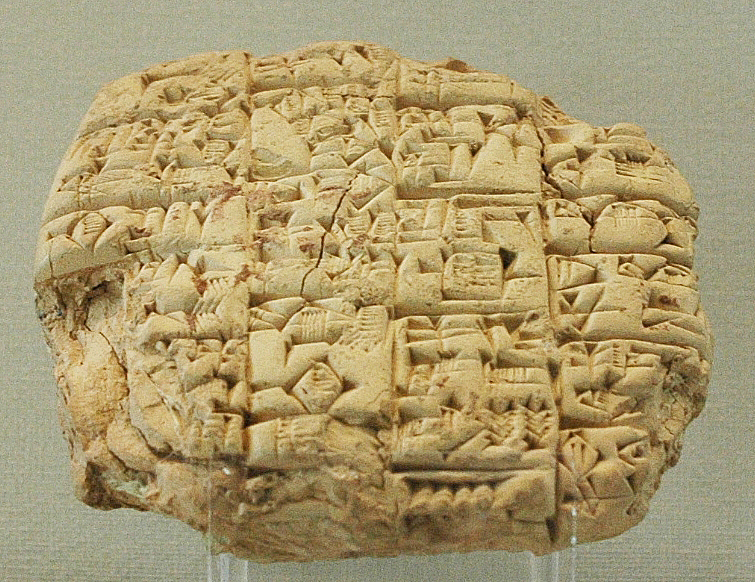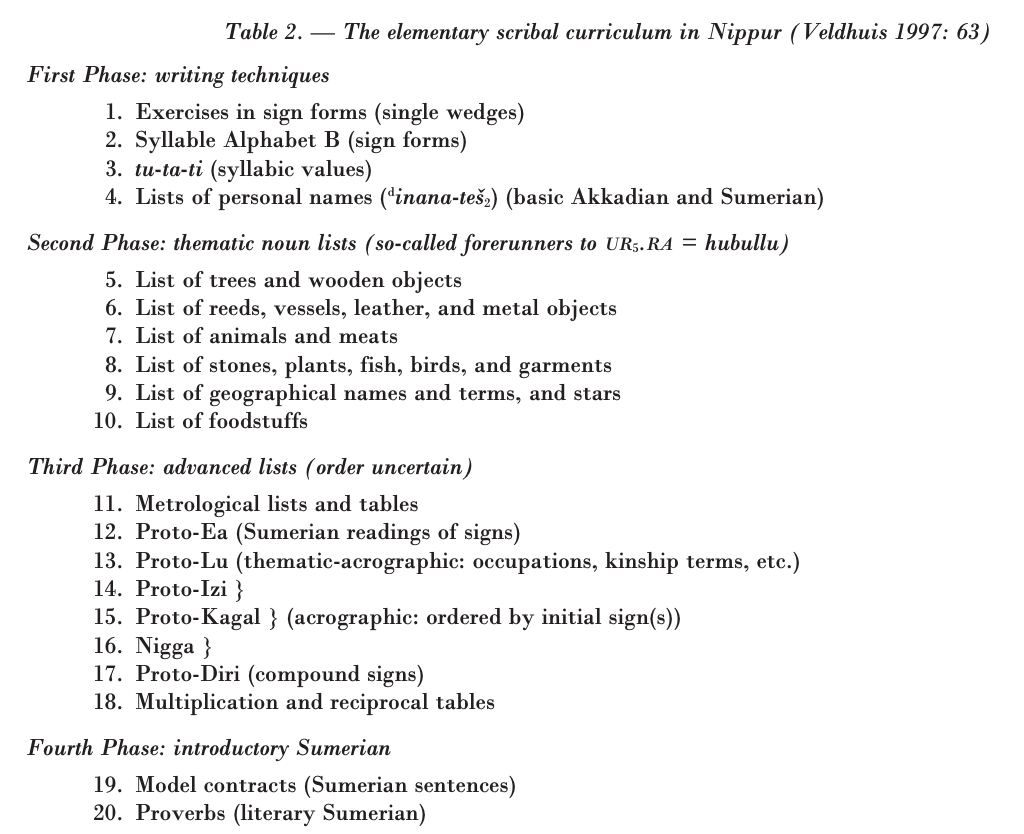Thinking about what education was for… 3800 year ago.
Author: dave
Go to Source
As any long suffering reader of this blog will be aware, I have a bit of a thing for the history of education. What I’ve always been curious about are what concepts of ‘what it means to learn’ and ‘what education is for’ are baked deep into our cultural understanding of formal education. I believe that there are bits and pieces dragging around behind our notions of school that profoundly impact and sometimes inhibit what we can do with the giant normativizing system so many of us care about.
First, a little background
My latest point of curiosity has been the schools (they’re called eduba) in Mesopotamia, let’s say between 2500BCE and 500 BCE. There are lots of reasons to love this time period. For one, we are talking about the part of the world that the Greeks probably stole the most from (unless you want to argue Minoan or Egyptian civilization… but, as I’m currently obsessed with Mesopotamian history, I’m going to go ahead and believe what I want).
This period and location is amazing to think about because of how they wrote things down. Sumerian Cuneiform is one of the oldest written languages on record. The internet might even tell you it’s the oldest one we know of, but let’s not fight. It’s really damn old. This is what it looks like

And what makes it so cool is that cuneiform was mostly written in clay. It’s mostly written on clay tablets. What happens to papyrus when the vagaries of time trample it and burn it? It burns. What happens to clay when it gets burnt? IT GETS HARDER. Upshot of it is, we have lots and lots of it.
I have been listening to a series of excellent lectures about Mesopotamia by Professor Amanda H. Podany on The Great Courses (through Audible) and I’ve been totally captivated by it. I have been particularly interested in the places where its been made clear that we know PILES of stuff about how they actually taught students in this time period. Because of the tablets. Also because ‘school literature’ was a writing genre. Most about how terrible it was to go to school and how much students were hit by their teachers.
Getting to the education bit
Now, Nippur was a city smack dab in the middle of Mesopotamia. And we’re going to zero in on one house (House F in fact) in the middle of this ancient city. Most of what is written in this next part comes from Eleanor Robson’s article about “The Tablet House”. While most of the houses that have been excavated in Nippur contain a variety of different tablets, the mixture of tablets in House F were a little different. There were way more tablets designed for teaching people how to write than there were tablets about how many beer they had bought.
So. We have what most experts think is a schoolhouse, from 1740BCE, that is still full of many of the materials that were used by the students who actually studied in it. Researchers have broadly separated the education practices of learners from this period into two categories – beginner and advanced. A beginner would learn how to hold a stylus, how to make the necessary shapes, and then what order of shapes respond to what words. And advanced student memorized and practiced writing a variety of old stories, hymns and other cultural pieces. All carved into clay tablets. Thousands upon thousands of which have survived. The following, for instance, is one researcher’s perspective on the order of elementary education.

The all time classic for advanced students would be stories of Gilgamesh (though if i’m right, House F would be before the story of Gilgamesh had been pulled together into one tale). I do not wish to point you to Gilgamesh, though it might just be my favourite story, instead, I will point you to the fight between the Hoe and the Plough It’s all kinds of awesome.
“7-19 The Hoe having engaged in a dispute with the Plough, the Hoe addressed the Plough: “Plough, you draw furrows — what does your furrowing matter to me? You break clods — what does your clod-breaking matter to me? When water overflows you cannot dam it up. You cannot fill baskets with earth. You cannot spread out clay to make bricks. You cannot lay foundations or build a house. You cannot strengthen an old wall’s base. You cannot put a roof on a good man’s house. Plough, you cannot straighten the town squares. Plough, you draw furrows — what does your furrowing matter to me? You make clods — what does your clod-making matter to me?” – linked above.
What is education for
No matter if you think that Ancient Egyptian pre-dates Sumerian by a hundred years or not, knowing ancient egyptian was not a great deal of help if you were trying to learn Sumerian. At first, Sumerian was written by using pictograms of things to represent sounds. But, eventually, those pictograms became collections of lines made by a flat stick into a lump of clay. In a world without horses, or carts, or printing machines, or computers… how do you go about standardizing which squishy lines mean fish and which ones mean tree?

Through a process of enforcement that is not clear to me, someone, somewhere started creating lexical lists. Basically lists of words that you need to be able to memorize. There are thousands of them that survive from all over Mesopotamia. The process of standardization required by the first person to do this is staggering. But they managed. And so, we have the elementary education described above. Here’s the list of words. First memorize the trees. Now the animals. Now the stars. This is what they mean. Memorize those scribe-to-be, and other scribes, all over the world [sic] will be able to know what you wrote here.
At the advanced level, they were memorizing the stories that shaped their culture. This post is getting long – there are lots of reasons why its useful to do that. Maybe telling stories was part of being a scribe. Maybe it was just meant as long form practice. Maybe they sold them.
It turns out that this school house had little chests baked into the floor in the corners that researchers believed were where you put broken pieces tablet so they could be soaked and turned back into clay. The writing materials were cheap. The more versions of the standard ‘list of words to remember’ the better. They were standard after all. Repetition makes for good memory. Practice makes perfect.
Standardization and memorization, though, seem to be critical goals for the education system from Nippur in 1740BCE. There are lexical lists actually baked into the walls in that school in Nippur (or so I have come to understand). It’s a lexical list. No one needs to update it. Clay is cheap(ish).
I can totally understand why they taught this way. Lexical words so we could communicate. The 24 stories listed in the Robson article, because each was a cultural touchstone. standardize and memorize. Everyone who graduates gets to be a scribe. One job. Two skills. (please note the exaggeration for emphasis)
Two thousand years of schools being like that is a pretty big percentage of the time that we’ve had schools. It wouldn’t be terribly surprising to hear that we were still influenced by it.
